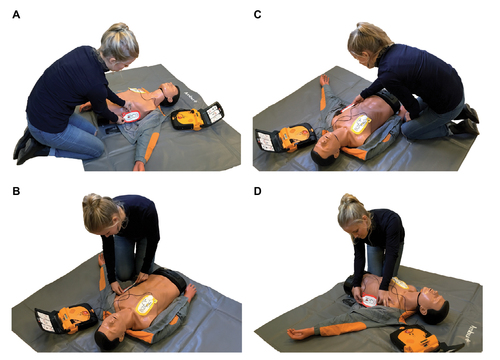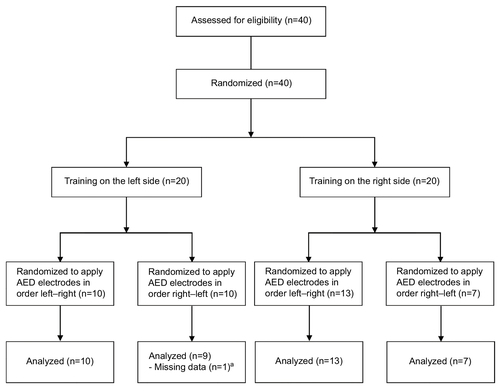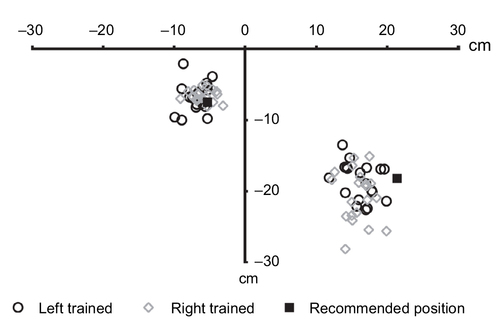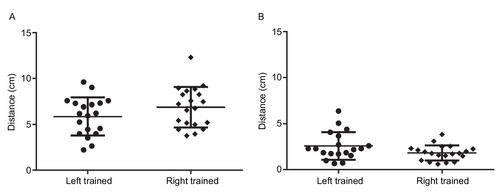Figures & data
Figure 1 Rescuer sitting on the left and right sides of a manikin.
Abbreviation: AED, automated external defibrillator.

Figure 2 Study flowchart.
Abbreviation: AED, automated external defibrillator.

Table 1 Participant characteristics
Figure 3 Placement of AED electrodes.
Abbreviation: AED, automated external defibrillator.

Figure 4 Distance from recommended position.
Abbreviation: AED, automated external defibrillator.

Table 2 Within-group comparison
